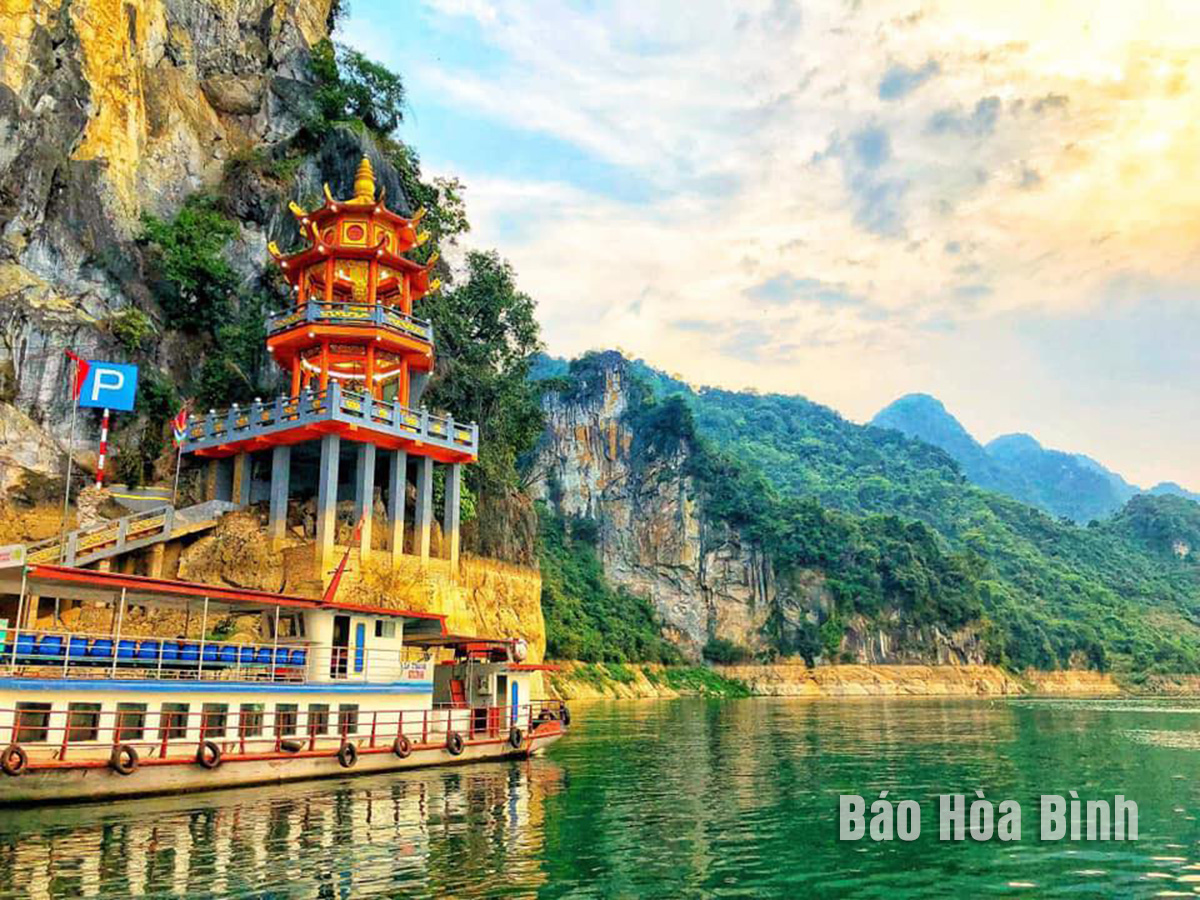



A prominent spiritual site in the area, Chua Thac Bo Temple in Thung Nai commune attracts a large number of pilgrims and tourists.
As one of the four ancient Muong regions in Hoa Binh province, Cao Phong has prioritised raising public awareness of tourism’s importance to socio-economic development. Local authorities have worked to position tourism as a spearhead economic sector, while focusing on infrastructure upgrade, investment attraction, and the development of tourism products that meet visitors' demand.
According to local authorities, six tourism-related projects have been approved in Cao Phong district, with a combined investment of over 789 billion VND (30.5 million USD). These include eco-resorts, cultural and wellness centres, and a heritage conservation site. Notable developments are the Binh Thanh Ecotourism Resort, Thung Nai Peninsula Resort, and the Parahills Hoa Binh tourism complex. A high-tech agricultural project with tourism potential is also under review.
To boost tourism, Cao Phong district has been upgrading roads, expanding the power grid, and enlarging the mobile and internet coverage, including 4G at key tourism sites.
At the same time, it is stepping up tourism promotion efforts through partnerships with national and local media agencies.
Notably, Vietnam Television and Laser-Ad Communications have featured the district in travel programmes, while authorities produce videos and brochures to showcase local attractions.
To make tourism a key economic driver, Cao Phong is pushing ahead with several measures such as raising public awareness of tourism and boosting infrastructure investment. Plans are also underway to develop ecotourism resorts, cultural heritage sites, and diverse tourism offerings across the district.